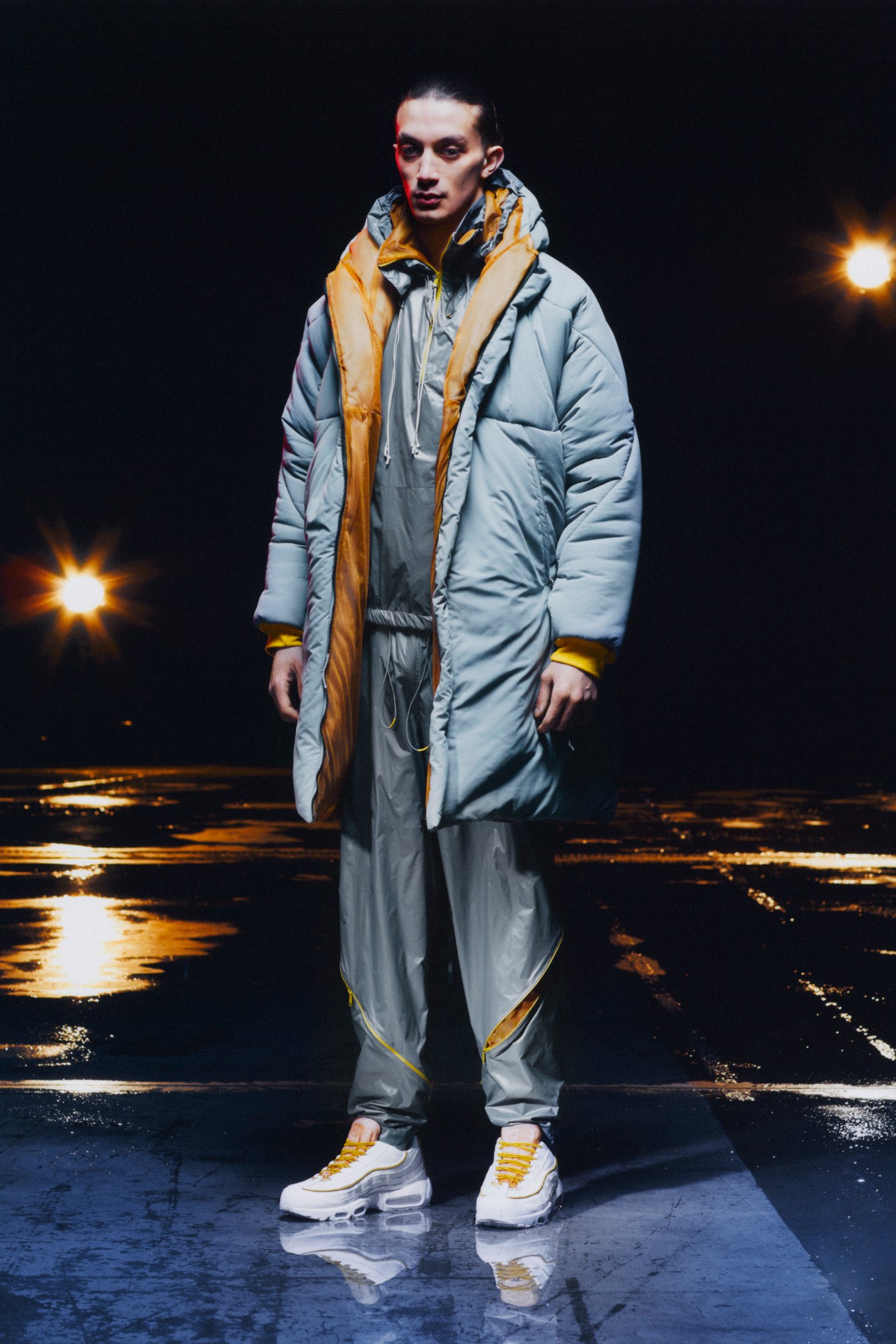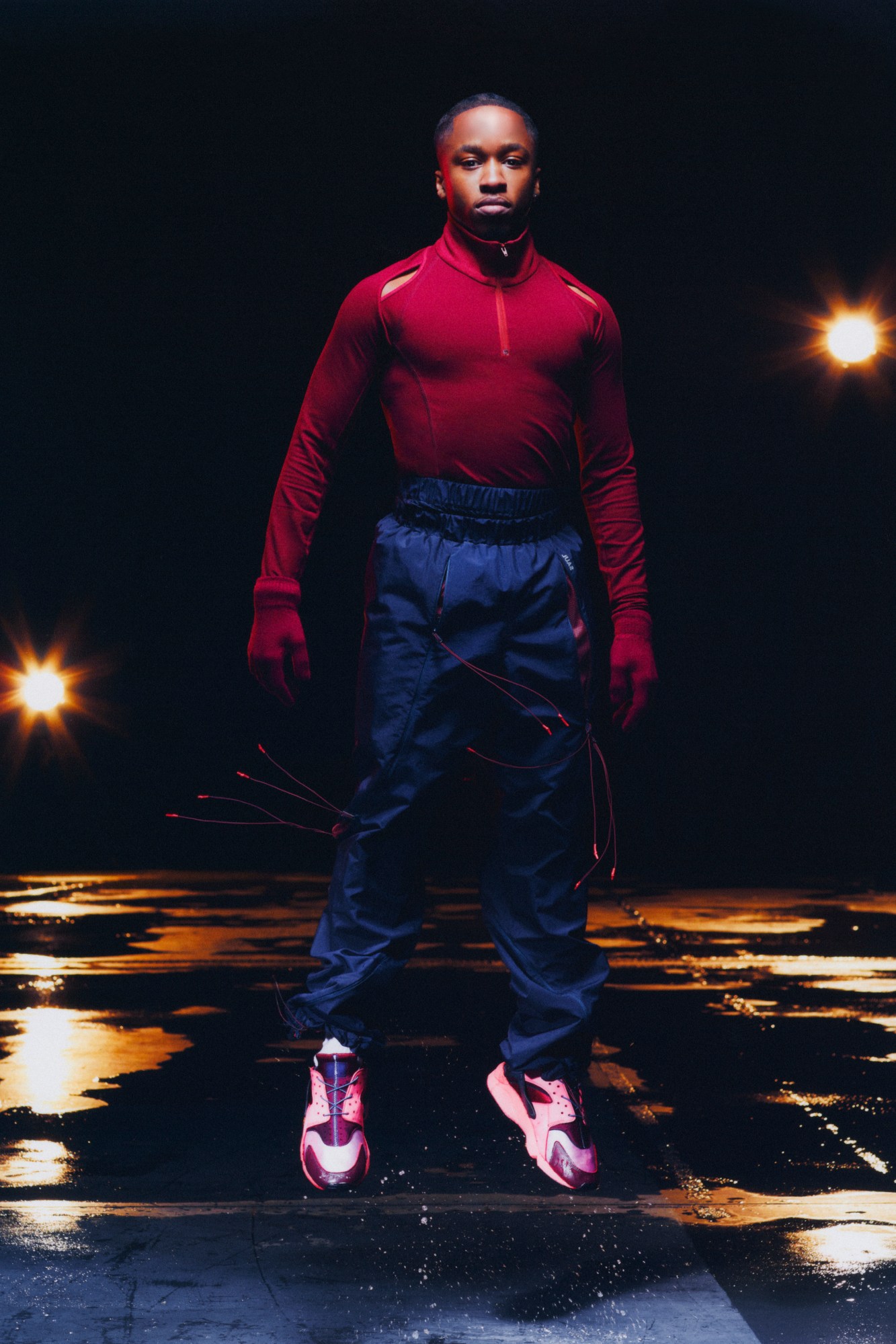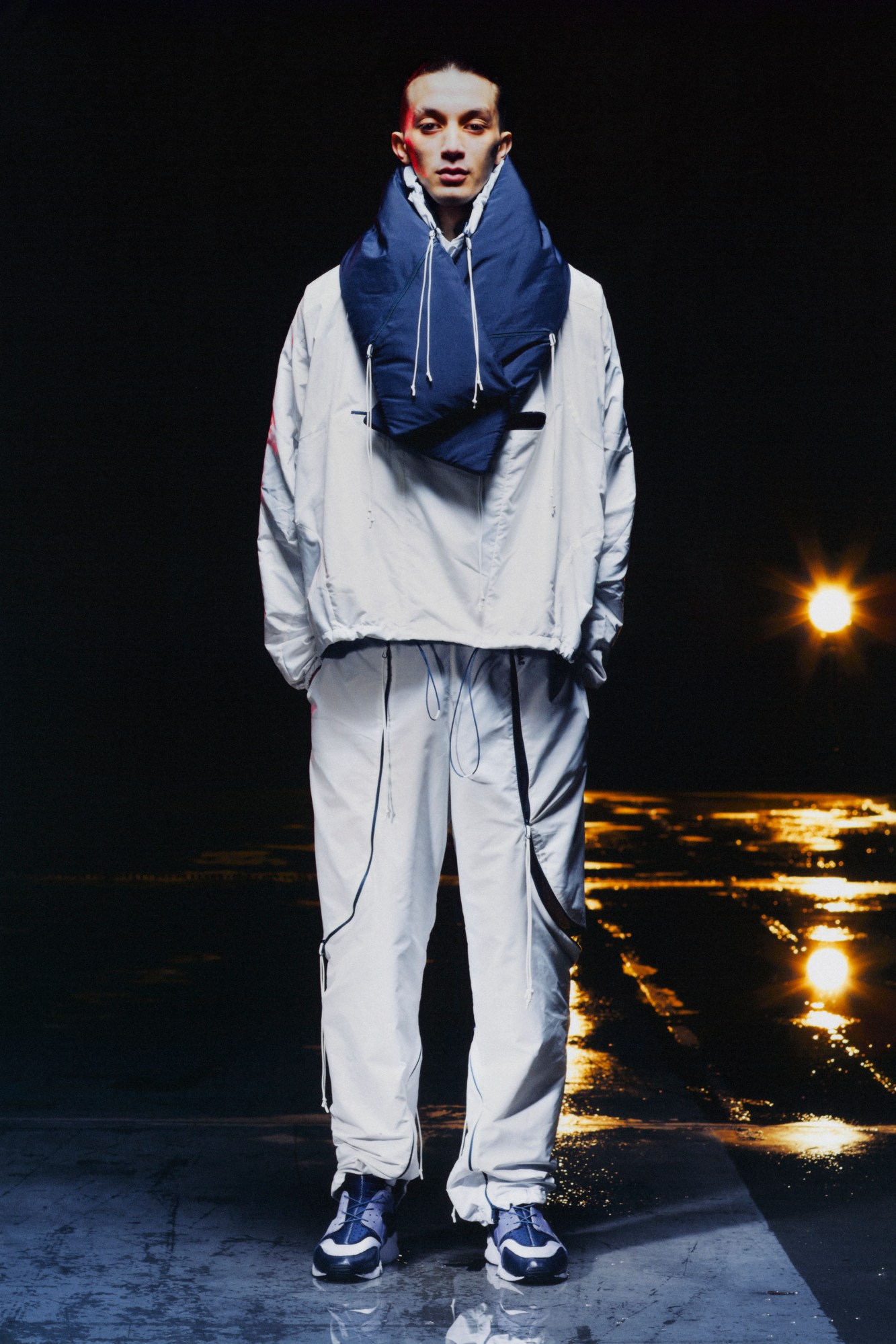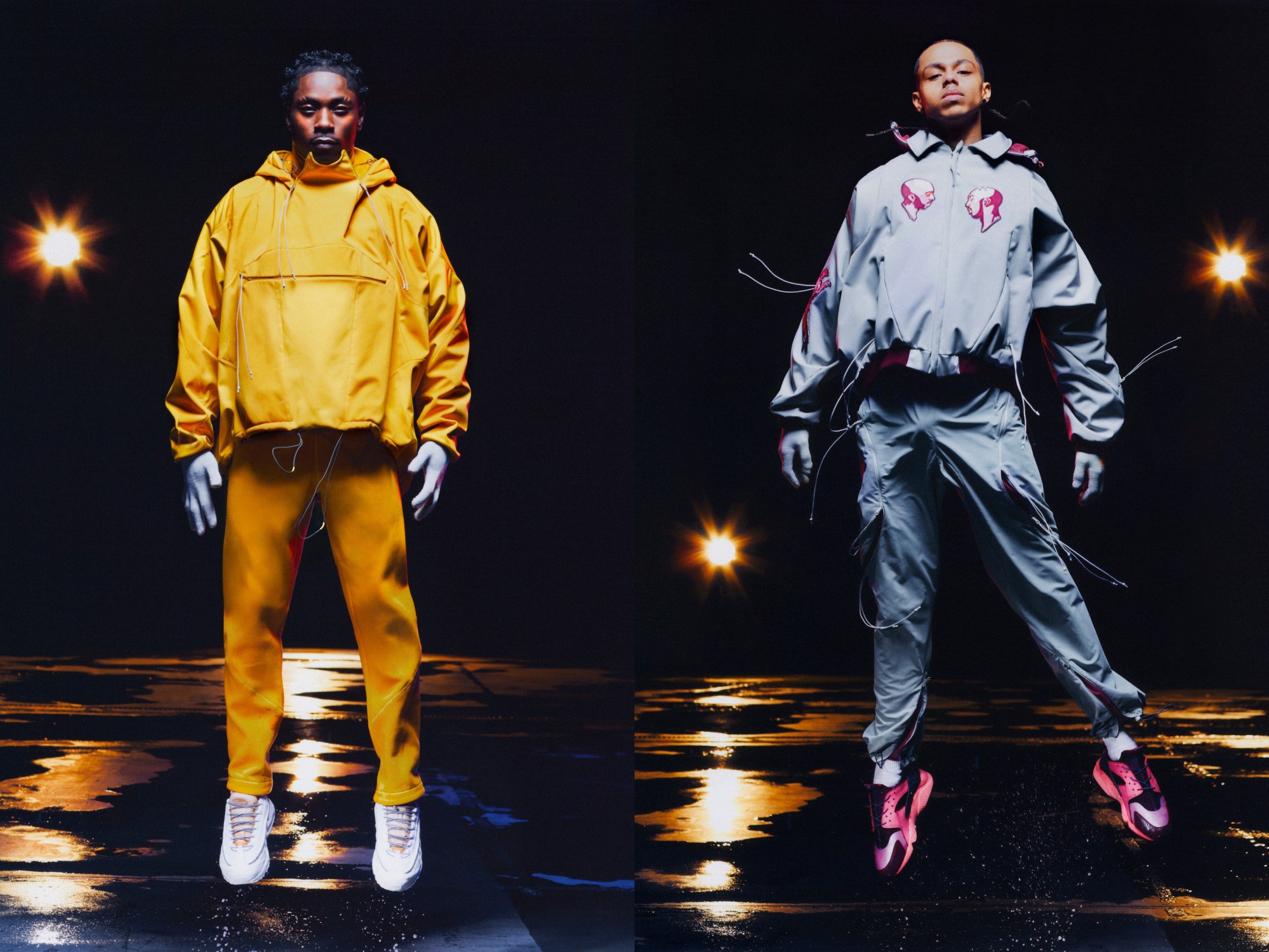As is the case for any independent young designer, the past six months have brought no shortage of obstacles. Thankfully, though, Saul Nash is a designer who relishes challenges. Since showing his SS21 collection as part of Fashion East back in September, “there’ve been some internal adjustments, both for me personally and for the brand. It’s been a really interesting transitional period,” he reflects, “but there are new challenges every season, and, at the moment, they really excite me. That newness really spurs me on.”
Today marks another fresh milestone for his eponymous brand — his first independent presentation on the London Fashion Week schedule since ‘graduating’ from Lulu Kennedy’s legendary talent incubator. He’s presenting “Twist,” an AW21 collection and film that reflects on the widely held preconceptions around sportswear and the men who wear it. Without giving too many spoilers for the film — which you can watch below — it’s an uplifting vignette that poetically subverts and exposes the viewer’s preconceptions around the men in the film — and makes you ask why you have them in the first place.
Much the same can be said about the clothes that make up Saul’s fifth collection since graduating from the Royal College of Art, too. A continuation of his exploration of sportswear as a technology to enhance bodily movement, this season sees the introduction of new fabrics, colours and forms. Softshell anoraks, for example, bring sturdier silhouettes than we’ve previously seen into the mix and offer counterpoints to the kinetic cuts and zip details that have quickly become a Saul Nash signature. And vivid embroidered graphics and a palette of earthen hues add a fresh decorative flair to the equation.
Ahead of the collection’s release, Saul filled us in on his collaborations with director Fx Goby and musician CKTRL, and the renewed importance of promoting self-acceptance in his work.
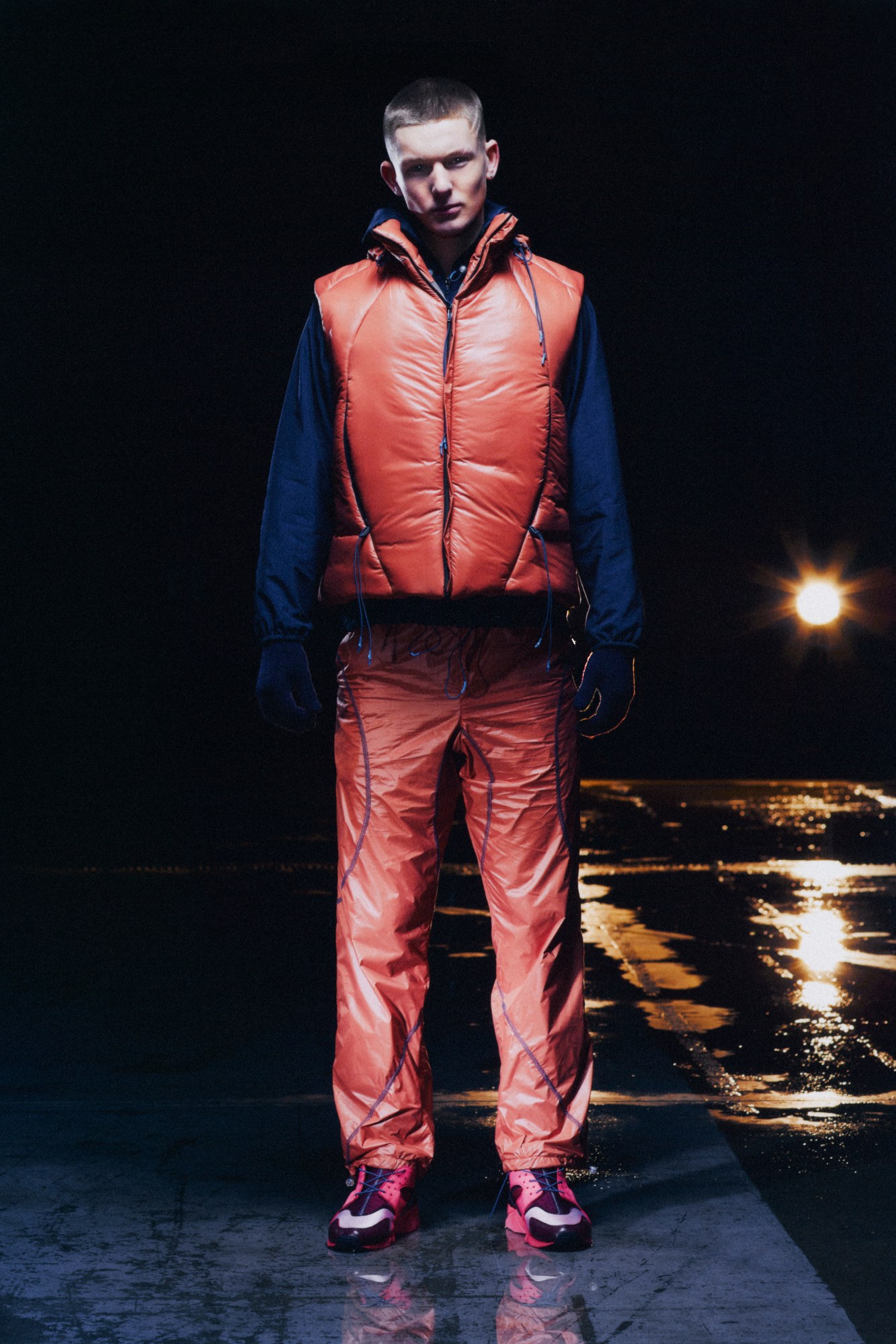
This is the first collection you’ve shown since ‘graduating’ from Fashion East. How does that feel?
Well, I feel that we’re in a time when the fashion system has been quite disrupted, and that we’re all presenting our work on more of an equal footing. So I think it’s been a bit less daunting than if it were a season where I had to do a massive show. But I really love Lulu and the whole Fashion East team, and really miss them. The three seasons I showed with them were such a beautiful journey, but I’m really excited to show the world what we have been working on.
What sort of impression of the Saul Nash world did you want to give with this collection and film?
We’ve always been looking at the idea of self-liberation since the beginning, but sometimes it can take a while to really refine or articulate an idea, or even realise what you’ve been trying to express. Whenever people ask me how I perceive masculinity, or how I perceive men’s dressing, there are so many aspects that make up my answer. But it’s only after bringing those aspects together a few times that I’ve started to realise why I bring them together the way I do. I guess this collection really articulates and offers context behind why I’ve been doing the work I’ve been doing. It puts the idea of subversion I’ve been looking at in a nutshell. When you first watch this season’s film, you assume one thing about the men in the film, but then your understanding of who they are has completely shifted by the end. It’s a story about acceptance; about finding and showing a space where the main protagonists in the film feel comfortable enough to share their truth with their friends; about embodying yourself and being happy with who you are. These are things I’ve always been hinting at, but now it’s actually said.
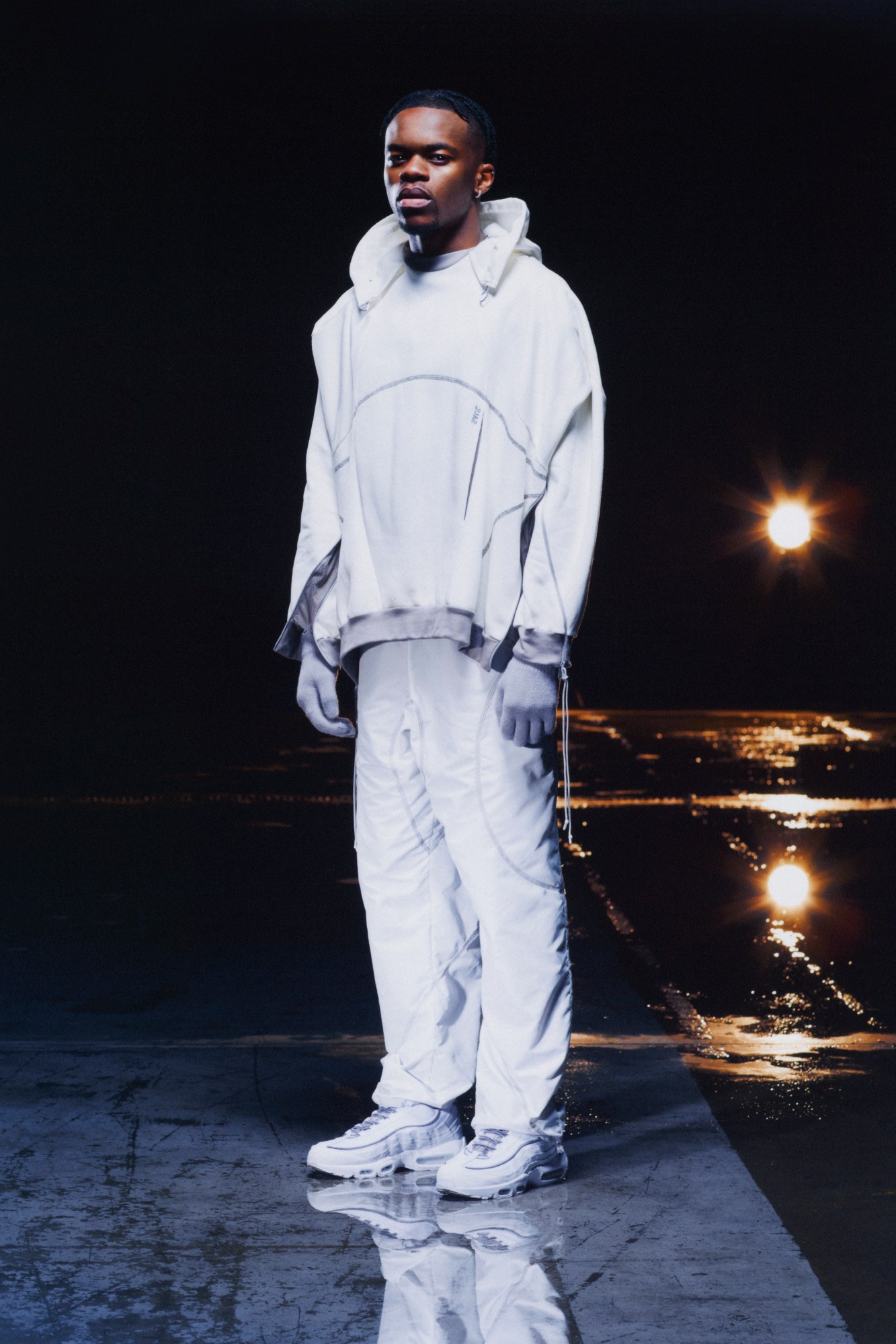
In the film, you’ve chosen to look at those themes through an explicitly queer lens. Why was that important this season?
I think it was just a natural development of the work, something I just felt ready to do. There were also events in my personal life that spurred it on and allowed me to feel confident expressing what I wanted to express in my work. We’re living in a time where issues around identity and how people are perceived are really part of the conversation. Sometimes I walk down the street, for example, and see someone clutching onto their handbag as I pass. But little does the person know that I’m on my way to work in the same building as them. I think that now, more than ever, is the time to dismiss these preconceived ideas, and just see people as people and accept them as they are. Being a 28-year-old man that still feels like I’m being profiled in the street, I wanted to take the opportunity to express the nuances and beauty in what’s seen as something to fear.
Fx Goby, your partner and creative collaborator, directed the film. What conversations did you have about the direction you wanted to take it in?
Fx is such an integral part of my day-to-day, and he knows about any feelings I’m going through, so it was a really natural process. What’s nice is that I’m able to really put my cards on the table and then see it through his lens. Our collaborative work is really the product of a duality between the two different people we are.

You also enlisted CKTRL to score the film’s music. Why did you want to work with him this season?
I performed to one of his pieces a while ago — he played live and I danced. But one reason is that he’s also from London; I’ve met him in social contexts as well, and we really relate to one another, and respect one another as artists. The emotional qualities and sense of expression that you get in his work really married well with what I wanted to communicate in the film, so it felt really natural to work with him on this.
When it comes to the clothes themselves, the palette you’ve worked with this season feels a bit poppier than what we’ve previously seen in your work.
Whenever I’m looking at colour, I’m always looking at more mundane or generic hues, thinking about the idea of a spectrum between fitting in and revealing yourselves. And I’m also asking myself how far you can push men to wear color, but in a way that still feels comfortable. So although the colours are quite poppy, I still wanted to make sure they felt quite earthy and natural — like you can see with the burnt orange, for example. It’s about introducing colours that pop, but are still at the cooler end of the spectrum.
You’ve also introduced elements that are more decorative than we’ve seen in previous seasons, like embroidered graphics. What’s the story behind those?
They’re actually of me kissing myself! If you look at the expression on the faces, it is also a nod to this idea of liberation. But the embroidery itself was also referring to a varsity jacket I used to wear as a teenager. It was about elevating those graphics and finding a way to bring them into the Saul Nash world.
